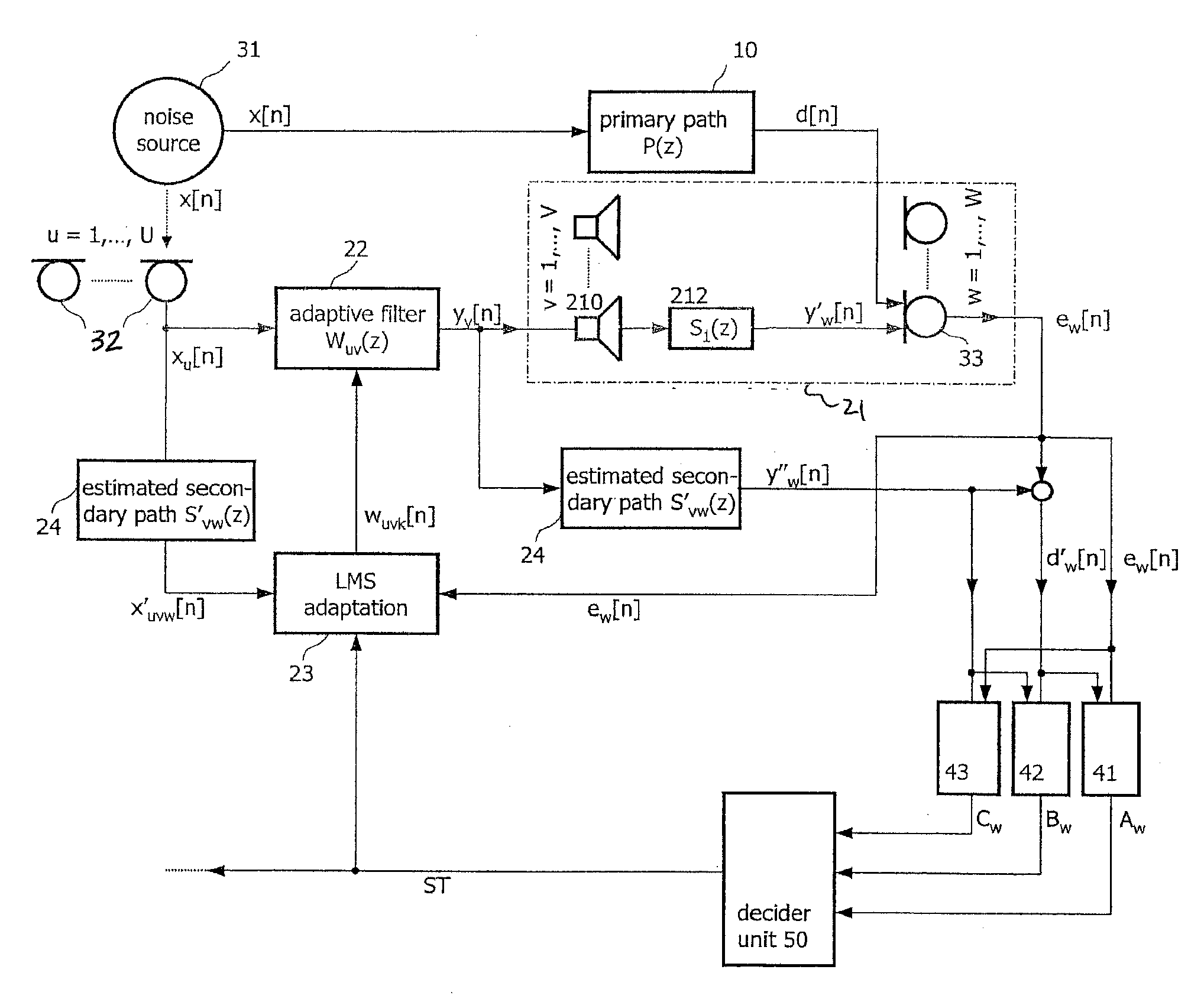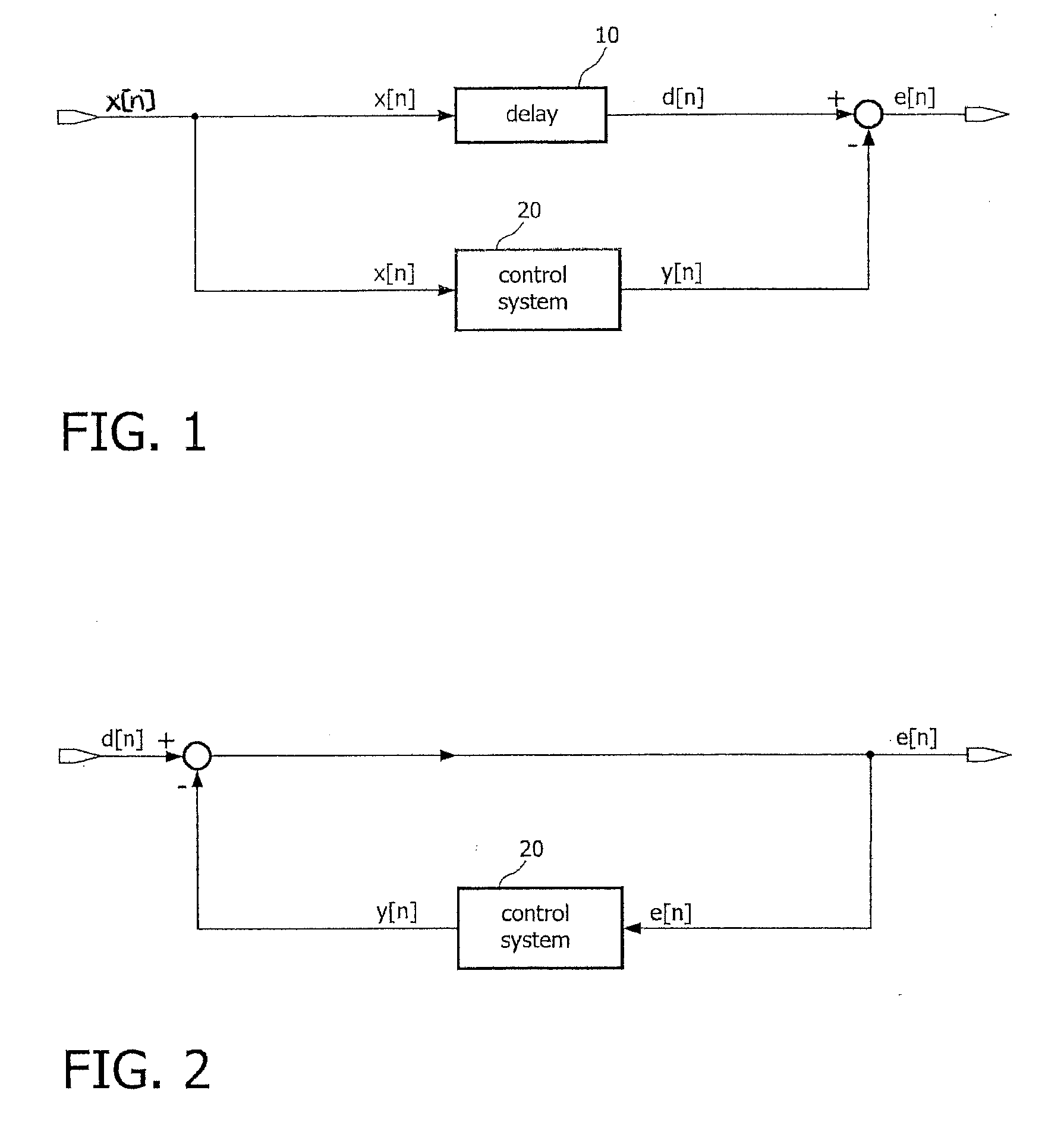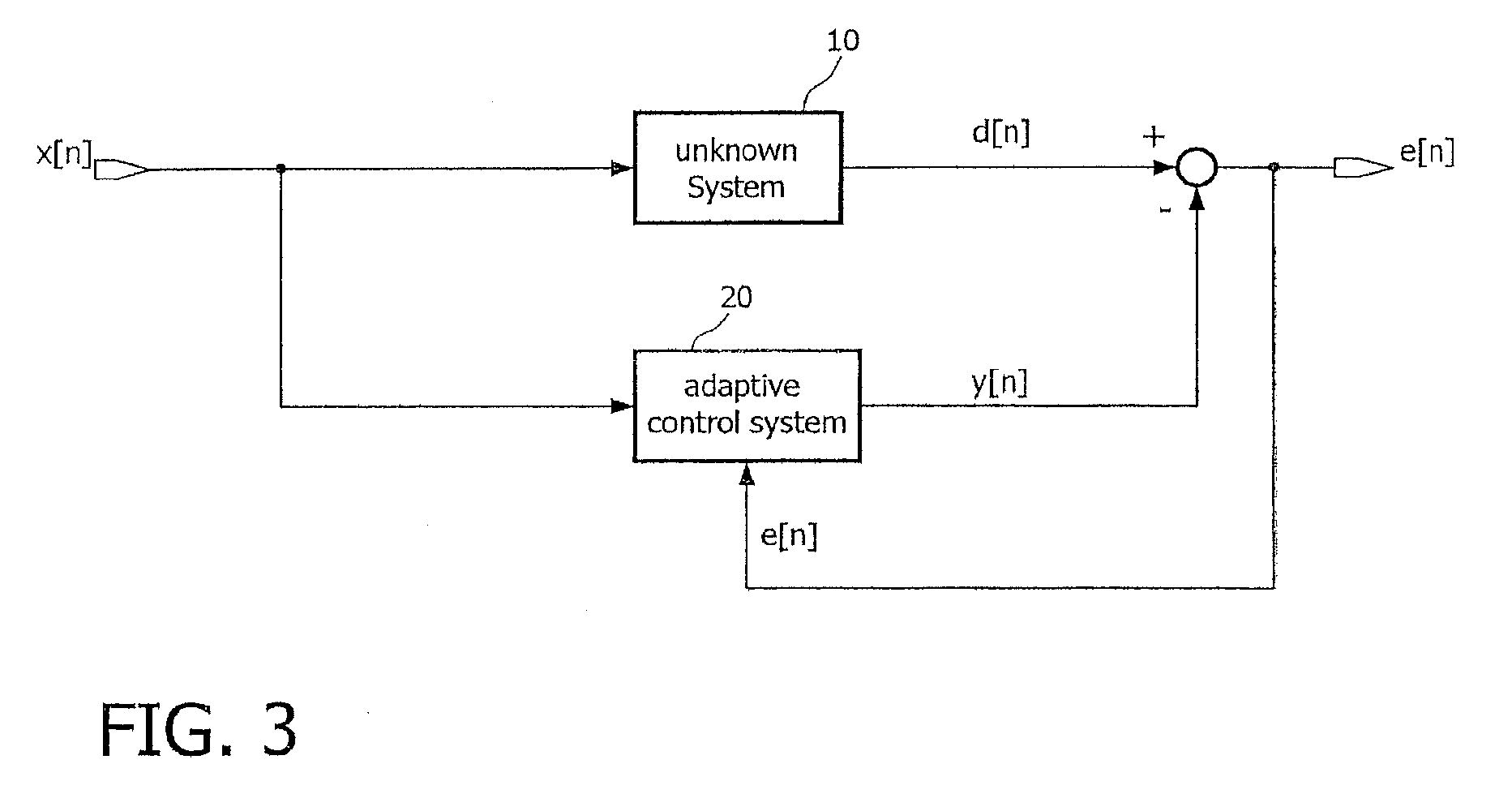Adaptive noise control system
a noise control and adaptive technology, applied in the field of active noise control and cancelling, can solve the problems of insufficient noise reduction, inability to reliably ensure stability in all listening environments, and the secondary path transmission function may have a negative impact on the performance of active noise control, so as to improve the robustness and stability of the entire active noise control method, improve the speed and the performance of adaptation, and improve the robustness of the whole active noise control method.
- Summary
- Abstract
- Description
- Claims
- Application Information
AI Technical Summary
Benefits of technology
Problems solved by technology
Method used
Image
Examples
Embodiment Construction
[0037]Active noise control systems (“ANC systems”) are used to suppress noise. For example, an ANC system may improve music reproduction or speech intelligibility in an interior of a motor vehicle. In another example, an ANC system may increase the quality of acoustic signals output from an active headset (e.g., a headset including an ANC system). The basic principle of such active noise control arrangements is based on the superposition of an existing undesired interfering signal with a compensation signal. The compensation signal, which has an opposite phase to that of the noise signal, is generated by the ANC system and added to the undesired disturbing noise signal. Ideally, by adding the compensation signal to the noise signal, the noise signal is completely suppressed.
[0038]A feedforward control is characterized in that a signal which is correlated to the undesired disturbing noise (also referred to as a “reference signal”) is used for driving a compensation actuator. In acous...
PUM
 Login to View More
Login to View More Abstract
Description
Claims
Application Information
 Login to View More
Login to View More - R&D
- Intellectual Property
- Life Sciences
- Materials
- Tech Scout
- Unparalleled Data Quality
- Higher Quality Content
- 60% Fewer Hallucinations
Browse by: Latest US Patents, China's latest patents, Technical Efficacy Thesaurus, Application Domain, Technology Topic, Popular Technical Reports.
© 2025 PatSnap. All rights reserved.Legal|Privacy policy|Modern Slavery Act Transparency Statement|Sitemap|About US| Contact US: help@patsnap.com



